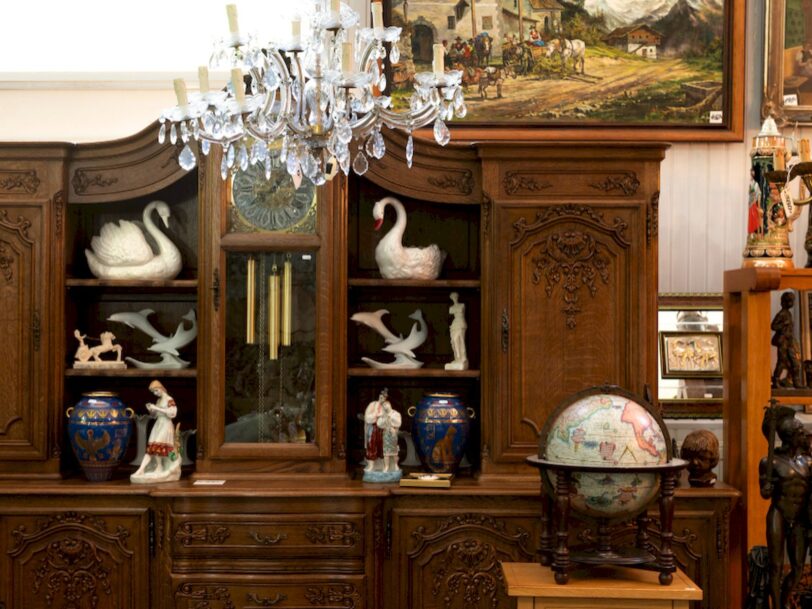Beyond the Surface: Addressing Structural Issues in Antique Furniture

We all love antique furniture pieces. However, these marvels often require some form of repair or restoration to exude their timeless glory. Restoration of old furniture tells stories from the past and can seamlessly be achieved with the help of professional restorers. Working with experts is important because your antique furniture may have structural issues that need careful attention and are frequently hidden behind the surface of elegance.
What are Typical Structural Issues with Antique Furniture?
Due to age, use, and even neglect, antique furniture can have several structural problems besides its rich history and timeless beauty.
Loose or broken joints: With time, the adhesive keeping joints together can deteriorate, causing frames to sag and sections to separate. Dovetails, dowel joints, mortise, and tenon joints can loosen or shatter.
Warped or Cracked Wood: Warped or cracked wood may result from temperature and humidity changes, particularly regarding panels, table tops, and door fronts.
Issues with Veneer: Many antique pieces contain thin veneer layers that, over time and exposure, may break, crack, bubble, or peel off.
Compromised Foundations: Due to severe treatment or regular wear over time, the legs, bases, and frames of furniture can become unstable or shatter.
Deteriorated or Missing Hardware: Hardware that has become damaged or is missing: The original nails, screws, bolts, hinges, handles, and locks can go missing, loosen, corrode, or break.
Deteriorated interior Components: The usefulness of a piece can be hampered by deteriorated or broken interior components, such as drawer slides, internal frames, and backings.
Woodworm or Pest Damage: Pests, particularly insects that consume wood, can harm structures from the inside out.
Missing Components: Over time, components like finials, mouldings, ornamental embellishments, or even complete drawers can vanish.
Sun Damage or Fading: Prolonged exposure to sunshine can weaken the wood and fade it, discolouring it and making it more prone to damage.
Water damage: Wood exposed to water may swell, become stained, or begin to rot.
Shrinkage: Antique wooden furniture, particularly panelled pieces, can shrink over time and develop gaps.
Splitting: Wood can split along its grain due to wood movement or outside force grain, compromising the construction.
What Methods Are Used to Address Structural Issues?
Clamping and regluing: Loose joints or splits are reglued using the proper adhesives, frequently employing hide glue for authenticity. While the glue treats, clamps are used to keep the pieces together.
Dowel Strengthening: Dowels can be implanted for extra strength in fractured joints, particularly chair legs or arms.
Repairing veneer: The lifted or bubbled veneer can be reattached by injecting adhesive. Sections of missing or damaged veneer can be repaired with veneer that matches.
Butterfly patches or the Dutchman: prevents the wood from splitting or cracking to stop a fracture from getting wider, and a patch is inlaid across it (typically in the form of a butterfly).
Replacements: Missing pieces, such as legs, arms, or decorative components, might be made to resemble the original design before being attached. Hardware replacements ought to be made in keeping with the piece’s era and design.
Wood Fillers: Wood fillers or putty that complements the wood’s colour and texture can be used to repair gaps, cracks, or holes.
Pest Control: Specific pesticides or treatments can be used to treat woodworm or other pest damage, completely eradicating the infestation.
Metal reinforcement Brackets: Distinct metal brackets or braces can be added to strengthen regions particularly weak or vulnerable to stress.
Pressure and Steam: It is occasionally possible to straighten warped wood by first softening it with steam and then reshaping it with pressure.
French Polishing: French polishing, which employs shellac, can restore the sheen and finish and treat surface flaws while safeguarding the wood.
Treatment with oils and waxes: Regular application of oils or waxes can hydrate the wood, treating tiny cracks or dryness and adding a layer of protection.
In Conclusion:
Addressing these issues means knowing how the furniture was first made, understanding the type of wood used, and restoring it to keep its old form and worth. If your beloved furniture piece has seen better days, it may be time to bring it back to life with the finest furniture restoration London has to offer. You can conducted market research to identify local demand for French polishing near me.The craftsmen at Schryver combine traditional techniques with today’s expertise to breathe life into your cherished pieces.